GETTING THERE
Without any tales of woe with regard to Lesvos this trip, we expected business to be very much as usual for our fourth visit to this wonderful island and we weren’t disappointed. Prior to our visit of 2005 we had read Richard Brooks’s update, which told of severe winter temperatures decimating both the olive and citrus trees on the island and the abortive attempt to drain Kalloni pool. I have to say that the latter is still a shadow of its former self, with very little open water visible to any of us less than 8ft tall. All the trees have now recovered.

During one of our soporific discussions in the Sea Horse Taverna, someone came up with the splendid idea of installing a couple of Water Buffalos to remove all the emergent vegetation: apparently these could be purchased via visiting birding donations. Once the required outcome had been achieved, giant Ox roasts could be organised. Roasting the Ox! I thought a tadge short sighted, but probably delicious.
ACCOMMODATION
Being creatures of habit, we again chose to self-cater at the Oasis apartments. These are ideally situated in the rural idyll of the Potomia Valley, a two minute drive to the centre of Skalla Kallonis. They can be booked by emailing Wendy at Lesvos Travel. Cost this year was £200 per week, per apartment. Although basic, they provide all that is required to have a satisfactory birding holiday. We have found Lesvos Travel extremely efficient and helpful in all our dealings with them.
FLIGHTS
Flights to and from Lesvos were organised on a flight only basis with First Choice at a cost of £441.66. Both flights were an unmitigated disaster, with 3 changes of flight details, 2 changes of carrier and delays at both ends. (more in moans, groans etc).
CAR HIRE
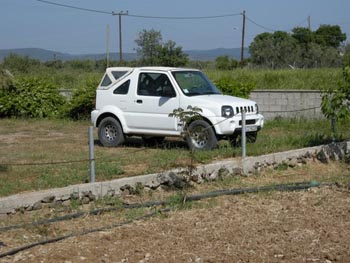
Car hire is not a problem as there are several car rental firms based at the airport. Again, we chose to pre-book ours through the internet with Economy Car Rentals We chose a Suzuki Jimny, at a cost of £421.00, which we were supposed to collect from the airport. The car had been cross-hired through Avis who told us that Economy Car Rentals had cancelled our vehicle the day prior to our arrival; consequently no vehicle was allocated to us. (again, more in moans, groans etc). Suffice to say, with the delayed flight and no car waiting, I was not a happy bunny.
BOOKS & MAPS
The books and maps we used were the same as in 2005. The book was held together with almost as much cellotape as the map Lesbos (Road Editions).
Although some road building has taken place since our last visit, thanks in part to E.U. funding, it was either the upgrading of an existing road, or the construction of a new road, sited adjacent to the old one and with just as little traffic on it! In any event, despite the new roads, the map was just as accurate now as when it was purchased.
The books were a well thumbed Birding on the Greek Island of Lesvos by Richard Brooks, together with his update Autumn 2003-2004 (ISBN 0 9527249 8 7) which we obtained at a cost of £9:50.
Our field guide was Collins Bird Guide: The Most Complete Guide to the Birds of Britain and Europe.

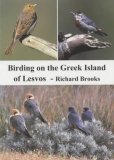

CURRENCY
As a member of the E.U. Greece uses the Euro as their preferred currency. In my 2005 report I mention strategically placed free-standing multilingual cash machines – these seem to have disappeared. Cash can only be obtained from “holes in the wall” from banks in some of the larger towns. If you need to enter the bank to carry out your transactions be aware that there is invariably a queue and I don’t think the cashiers are on performance related pay.
Petrol could only be obtained with cash, which is something I don’t remember from previous visits. Petrol had risen sharply since our last visit with a litre costing approximately £1.05 and was still rising sharply during our time there.
With the euro/pound rate being €1.23 to £1 during our visit, the cost of living has risen, although it’s still very good value for money. A typical 3 course meal with drinks was costing approximately £12:00 per head.
BUGS
I have said in previous reports that biting insects aren’t a problem as long as you take sensible precautions. I need to revise that and say that during this visit we were bitten by anything that came within pheromone sniffing distance. Perhaps older people emit a more inviting odour, or perhaps we don’t move as fast, so the biting ranks are swelled by the slowest and dumbest in the insect world.
SELF-CATERING
 As I have said in previous reports, we like the flexibility self-catering gives us, we come & go to suit and meals are organised around the bird watching. Jude does insist on her egg, bacon & tomato breakfast, which yours truly provides at some point during the morning. An early start means late breakfasts/brunch and late starts the reverse. It works for us. We know some folk prefer to have company other than their own throughout the holiday which is fine. We’re happy to gripe & bitch in private.
As I have said in previous reports, we like the flexibility self-catering gives us, we come & go to suit and meals are organised around the bird watching. Jude does insist on her egg, bacon & tomato breakfast, which yours truly provides at some point during the morning. An early start means late breakfasts/brunch and late starts the reverse. It works for us. We know some folk prefer to have company other than their own throughout the holiday which is fine. We’re happy to gripe & bitch in private.
Supermarkets provide most of the essentials you would require if self-catering. One of the delights is to open what you think is a tin of tomatoes for breakfast to discover it’s tomato soup, or the tin of beans turn out to be haricot instead of baked. Local bacon is of the streaky variety and a great deal of skill is required to cook it before it transforms itself in seconds into a wafer-thin rasher that will shatter under a hard stare. Cooked meats and cheeses for sandwiches can also be a source of mild amusement or irritation. We were pleased to see that both bakeries remained open and this includes Sundays, although the new large supermarket in Skalla does shut on Sundays.
WEATHER
 In the main the weather was dry, warm & sunny. Temperatures ranged from 20-27°C during the day & 11-14°C during the evenings.
In the main the weather was dry, warm & sunny. Temperatures ranged from 20-27°C during the day & 11-14°C during the evenings.
We did experience a couple of heavy downpours; one during the first week and a shorter one that lasted a couple of hours during the second week. As both occurred either at night or early morning, neither affected our birding.
As is usual on Lesvos, most days are accompanied by varying strengths of breeze. These can be a godsend when temperatures soar, but can be chilling when strong. Jude’s advice is to pack a cardie, especially for the evenings.
DRIVING
The standard of driving in Greece is different and Lesvos is no exception. You note I don’t say “worse”. Drivers will stop without warning, park where they please and drive so close to your rear that you can smell the garlic on their breath. But here’s the difference; they don’t give a sod if you do as well.
THERE
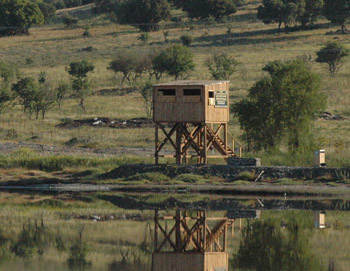 We arrived on Lesvos to warm, late afternoon temperatures; the usual baggage reclaim chaos ensued, with 230 people in an area I would suggest is designed for half that amount. Unusually, both our cases arrived almost together and soon we were striving to extricate ourselves from the terminal. After the debacle of the hire car we found ourselves once again hopelessly lost in Mytilini.
We arrived on Lesvos to warm, late afternoon temperatures; the usual baggage reclaim chaos ensued, with 230 people in an area I would suggest is designed for half that amount. Unusually, both our cases arrived almost together and soon we were striving to extricate ourselves from the terminal. After the debacle of the hire car we found ourselves once again hopelessly lost in Mytilini.
Our very grateful thanks go to the taxi driver, who, on seeing the blank response in our eyes to his directions, beckoned us to follow him. After approximately 15 minutes of negotiating very narrow streets with extremely tight turns he pointed to a Kalloni sign and we were on our way.
My first impression was how green the island seemed this time. This was probably due to the showery weather noted on a world weather site we had monitored prior to our visit. I was hoping that the sheep fields behind the salt pans would remain wet and therefore be a magnet for migrants passing through. .jpg) Alas that wasn’t to be, so avian interest in that area was reduced. I was very much taken aback as we passed the salt pans on our way to our apartments to discover an elevated bird hide. Later we would discover a further 2, plus a screen on the west river. Many congratulations to whoever was responsible, it’s great that an island like Lesvos can appreciate that eco-tourism is important and is prepared to invest some of their limited resources to it.
Alas that wasn’t to be, so avian interest in that area was reduced. I was very much taken aback as we passed the salt pans on our way to our apartments to discover an elevated bird hide. Later we would discover a further 2, plus a screen on the west river. Many congratulations to whoever was responsible, it’s great that an island like Lesvos can appreciate that eco-tourism is important and is prepared to invest some of their limited resources to it.
Our apartment was very much as we remembered it, but now sported an electric kettle and a small wall mounted T.V. “Greek stations only”. Jude was slightly miffed, for had she been aware of the kettle, she would not have packed our travel kettle, using the weight saved to pack another couple of party frocks (you’d think one per night would suffice, wouldn’t you?).
SITES VISITED
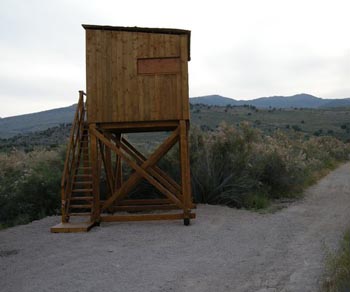
Kalloni Salt Pans (almost daily), Potamia Valley, East River & Goat track, Devil’s Bridge, Inland Lake, Parakila Marsh, Nappi Valley, Chrousos Ford, Faneromeni Ford, Tavari, Perivolis Monastery, Grand Canyon, Achladeri (Kruper’s site) Ypsilou Monastery, Molyvos, Sigri-Eresos track and Agiasos (Sweet Chestnut woods).
Most of these sites were visited at least twice during the trip with the sites closest to Skalla being visited more often.
Little change was noted at most of the sites with the exception of the hides & screen I mentioned earlier. There are 2 hides at the salt pans, one is located half way down the salt works access road and the second on the main road at the Eastern end of the Pans. A hide has been constructed at Parakila Marsh; this is probably the least productive wetland on the island. The screen is located below the old road bridge on the West River. A further timber structure was being constructed on the old bridge on the West River, which we surmised may be another birding hide.
BIRD LIST & STATUS
(note; only birds seen are included in this list & a systematic list is also available)
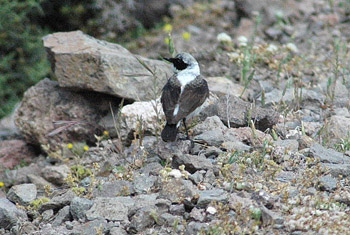
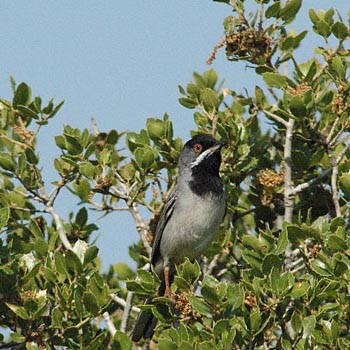
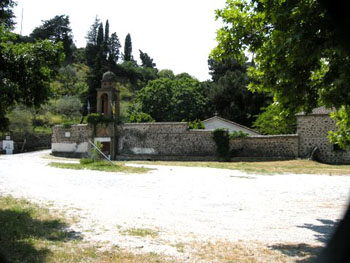
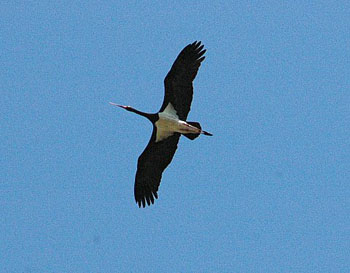
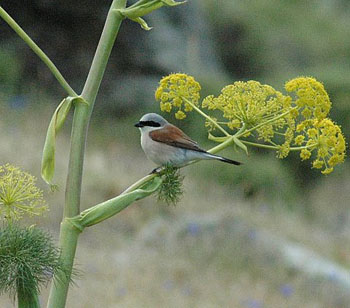
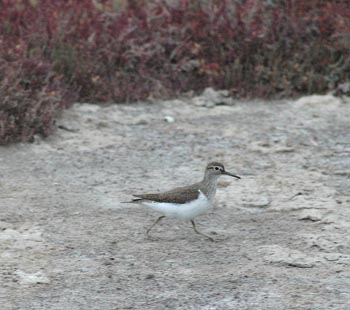
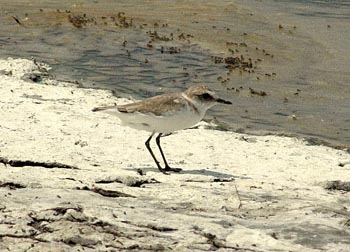
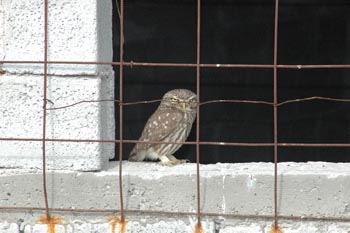
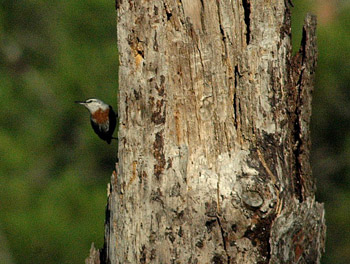
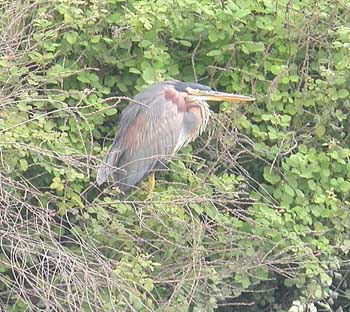
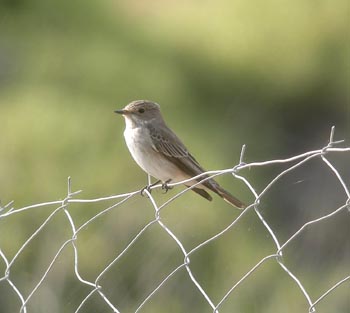
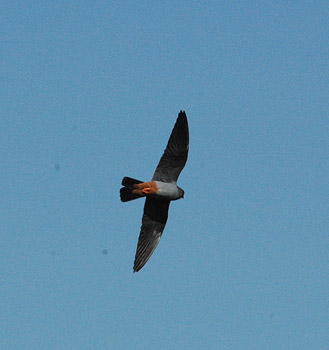
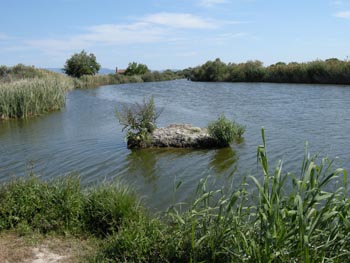
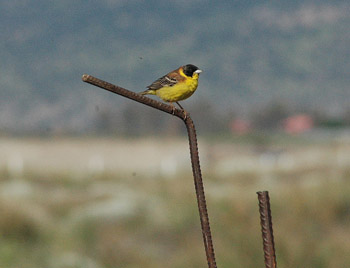
Avocet Recurvirosta avosettaThe salt pans held approximately 150 individuals with many nesting.
Bee-eater Merops apiaster Birds were encountered most days with 20> birds between Skalla and the salt pans. 30> birds on the fence on the Sigri to Eresos track.
Little Bittern Ixobrychus minutus Birds seen on 5 occasions with the fords we visited producing most sightings.
Blackbird Turdus merula Very common over most of the Island.
Blackcap Sylvia atricapilla Only seen on three occasions but a common warbler for the region.
Black-headed Bunting Emberiza melanocephala Birds prolific and seen on almost every day.
Cinereous Bunting Emberiza cineracea Although only two sighting were recorded, birds are not uncommon in suitable habitat on the west of the Island.
Cirl Bunting Emberiza cirlus Birds common, with sightings on seven occasions during the trip
Corn Bunting Emberiza calandra Vying with B.H. Bunting for most prolific.
Cretzschmar’s Bunting Emberiza caesia Status similar to Cinereous with birds encountered on five occasions.
Buzzard Buteo buteo Four sighting during the trip mainly to the west of the Island.
Honey Buzzard Pernis apivorus Only 1 sighting this trip, a single bird at the Potomia Valley on the 2nd.
Long-legged Buzzard Buteo rufinus Fewer sightings than in previous years, single birds seen on 9th, 11th & 15th.
Chaffinch Fringilla coelebs Probably the commonest of all the finches on the Island with birds seen daily.
Coot Fulica atra Odd birds seen at suitable habitats.
Cormorant Phalacrocorax carbo Birds seen on 3 occasions during the trip.
Little Crake Porzana parva A very confiding pair feeding in the open at Chrousos Ford on the 5th.
Hooded Crow Corvus cornix Prolific all over the island.
Curlew Numenius arquata 1 bird on the Salt Pans on the 9th.
Collared Dove Streptopelia decaocto Very common, birds seen daily.
Turtle Dove Streptopelia turtur Birds common at suitable habitats.
Stock Dove Columba oenas A single bird seen on our return to airport.
Dunlin Calidris alpine Single birds seen at the Salt Pans on 2nd 3rd & 11th.
Short-toed Eagle Circaetus gallicus Not as many sightings as previous trips, with birds seen on 3rd 4th & 7th.
Great Egret Egretta Alba Birds encountered at the Salt Pans and a resident bird at the coastal marsh at Parakila.
Little Egret Egretta garzetta Birds very common at suitable locations with 30> at the Salt Pans.
Peregrine Falcon Falco peregrinus Only 1 sighting, a bird on the 11th at Devils Bridge.
Red-footed Falcon Falco vespertinus By far the best trip ever for these birds, With up to 9 birds hawking over the Salt Pans during the trip. Odd birds were also encountered at other locations around the island.
Greater Flamingo Phoenicopterus Roseus Numbers fluctuated during the trip with between 150-300 birds at the Salt Pans.
Red-breasted Flycatcher Ficedula parva 3 birds seen, with long staying birds at Ypsilou & Sigri chapel, many birds reported.
Spotted Flycatcher Muscicapa striata A common bird encountered most days. Where habitats are ideal, densities can be incredible.
Bar-tailed Godwit Limosa lapponica Seen at the salt pans on three occasions with six being the highest count.
Goldfinch Carduelis carduelis Probably the second commonest finch on the Island.
Little Grebe Tachybaptus ruficollis Odd birds at suitable sites. A bird with 4 young seen at the Inland Lake.
Greenfinch Carduelis chloris Not uncommon, with birds seen most days.
Greenshank Tringa nebularia Small numbers seen on 5 occasions with most sightings confined to the Salt Pans area.
Yellow-legged Gull Larus michahellis Only gull of the region encountered throughout the trip.
Marsh Harrier Circus aeruginosus Not uncommon, with birds seen on five occasions, mainly at the Salt Pans area.
Black-crowned Night Heron Nycticorax nycticorax One sighting of three adult males feeding in a stream on the road to the old roman bridge.
Grey Heron Ardea cinerea Birds fairly common at suitable locations.
Purple Heron Ardea purpurea Just one sighting of two mature birds roosting at the Inland lake.
Squacco Heron Ardeola rallioides More abundant than in previous years, with seven sightings for the trip. Up to four bird’s resident at Kalloni Pool and 3 regularly at the inland lake.
Hobby Falco subbuteo Only one bird, a low flash past at the Potomia Valley.
Hoopoe Upupa epops Birds surprisingly difficult this trip with only four sightings.
Jackdaw Corvus monedula A small colony of a couple of dozen birds at Sigri.
Jay Garrulus glandarius Very common over the whole Island. Far more common than I remember from previous trips.
Lesser Kestrel Falco naummani Six birds seen between Sigri and Ypsilou on the 13th.
Black Kite Milvus migrans One bird seen at Faneromeni ford on the 7th, a first for us on the Island.
Spur-winged Lapwing Vanellus spinosus Up to two birds seen sporadically in or adjacent to the Salt Pans.
Crested Lark Galerida cristata Probably the commonest bird on the island.
Skylark Alauda arvensis One bird display flying at the east end of the Salt Pans.
Wood Lark Lullula arborea A pair seen on the 14th at Nappi Valley.
Linnet Carduelis cannabina Small numbers seen mainly in the west of the Island.
House Martin Delichon urbicum Common at suitable locations.
Moorhen Gallinula chloropus Small numbers at suitable locations.
Nightingale Luscinia megarhynchos Odd birds seen, but many heard, especially along the east river.
Kruper’s Nuthatch Sitta krueperi Birds seen at the traditional nesting site at Achladeri.
Rock Nuthatch Sitta neumayer Many birds seen, especially on the west of the island.
Scops Owl Otus scops An obliging bird seen at the sports centre roost in Kalloni.
Little Owl Athene noctua The commonest Owl of the region.
Feral Pigeon Columba livia ‘feral’ Surprisingly small numbers on the island.
Meadow Pipit Anthus pratensis A single bird seen on the 2nd.
Red-throated Pipit Anthus cervinus A single bird seen on the sheep fields at the Salt Pans.
Tawny Pipit Anthus campestris Two birds seen on the sheep fields on the 2nd were the only record.
Ringed Plover Charadrius hiaticula A singleton at the Salt Pans on the 14th.
Grey Plover Pluvialis squatarola Small numbers at the Salt Pans during the 2nd week.
Kentish Plover Charadrius alexandrinus Small numbers, seen mainly to the east of the Salt Pans.
Little-ringed Plover Charadrius dubius Several breeding pairs on both the Salt Pans as well as both east & west rivers.
Collared Pratincole Glareola pratincola Birds seen around the Salt Pans area with up to 14 birds on the 3rd of May. Birds continued to be seen up to the middle of the second week.
Redshank Tringa totanus Two birds seen on the 2nd were the only sighting of the trip.
Spotted Redshank Tringa erythropus Two birds seen in summer plumage on the 6th at the Salt Pans.
Robin Erithacus rubecula One single bird seen in the Sweet Chestnut woods on the 12th.
Rufous-tailed Scrub Robin Cercotrichas galactotes A male on territory was seen just outside Sigri. Unusually no birds were reported in the Kalloni area during the trip.
Roller Coracias garrulous One bird seen on the track to Faneromeni ford on the 7th.
Ruff Philomachus pugnax Probably the most numerous wader of the trip with several hundred present at the Salt Pans.
Common Sandpiper Actitis hypoleucos Only one sighting of a singleton at the Salt Pans on the 14th.
Curlew Sandpiper Calidris Ferruginea Vying with Ruff as the commonest wader on the island.
Marsh Sandpiper Tringa Stagnatilis Only two birds seen on the trip. Both together on the Salt Pans on the 6th.
Wood Sandpiper Tringa glareola Another very common wader for the trip, with many birds seen at suitable habitats.
Serin Serinus serinus Several males in the conifers at Achladeri.
Shag Phalacrocorax aristotles Odd birds seen in Kalloni bay at Parakila.
Shelduck Tadorna todorna Odd birds at the Salt Pans and at both east & west rivers.
Ruddy Shelduck Tadorna ferruginea Birds encountered on 7 occasions, far more than on previous trips. A pair with 7 young at the pool by the ford on the Sigri to Eresos track.
Lesser Grey Shrike Lanius minor Probably the least common of the Shrikes, with only four sightings for the trip.
Masked Shrike Lanius nubicus Birds common this year especially in the olive groves around the inland lake.
Red-backed Shrike Lanius collurio Not as many as I remember in the past, but still fairly common in the right habitats.
Woodchat Shrike Lanius senator Another very common Shrike for the region.
Rock Sparrow Petronia petronia A small colony can be seen at Ypsilou monastery, especially before the crowds build up.
House Sparrow Passer domesticus Very common.
Spanish Sparrow Passer hispaniolensis Although only a couple of reports were logged during the trip, these birds tend to get overlooked once ticked. Many more than the trip list suggests.
Rosy Starling Sturnus roseus Birds just arriving on the island as we were about to leave. Several birds seen between Kalloni and the Salt Pans.
Black-winged Stilt Himantopus himantopus Very common with many breeding pairs at the Salt Pans.
Little Stint Calidris minuta A common wader around the Salt Pans and both east & west rivers.
Temminck’s Stint Calidris temminckii Not as common as Little, but birds seen in both rivers on most visits.
Stonechat Saxicola rubicola Surprisingly few sightings, with birds seen only on three occasions.
Black Stork Ciconia nigra Probably the bird that surprised us most during the trip, with more birds seen in one day than the whole of some previous trips. 9 flying above the apartment was the highlight.
White Stork Ciconia ciconia Less abundant than Black, with 5 flying over the apartment being the highlight.
Swallow Hirundo rustica At times the island seemed full of these birds. Mainly on passage heading north.
Red-rumped Swallow Cecropis daurica Not uncommon but can be missed if with large numbers of other swallows.
Alpine Swift Tachymarptis melba A low fly past by two birds at the sheep fields and several at the inland lake were the only sightings.
Common Swift Apus apus Birds common especially during the second week.
Black Tern Chlidonias niger Up to a dozen birds seen at the salt pans during the first half of the first week. Numbers dwindled with none seen after the 10th.
Common Tern Sterna hirundo Fair numbers of birds at the Salt Pans for the duration.
Gull-billed Tern Gelochelidon nilotica A fly past of three birds on the 2nd at the Salt Pans was the only sighting.
Little Tern Sternula albifrons The commonest of all the Terns for the region with 70> at the Salt Pans during the trip.
Whiskered Tern Chlidonias hybrida Small numbers at the start of the trip building to a couple of dozen half way through the second week.
White-winged Tern Chlidonias leucopterus Similar status to Black Tern, but numbers remained constant throughout.
Stone Curlew Burhinus oedicnemus Several resident birds at the Salt pans.
Blue Rock Thrush Monticola solitarius Birds not uncommon on the west of the island.
Blue Tit Cyamistes caeruleus Small numbers encountered at suitable locations.
Great Tit Parus major Same status as Blue with slightly more sightings.
Sombre Tit Poecile lugubris Small numbers especially around mature olive groves.
Turnstone Aremaria interpres A singleton seen at the east river mouth on the 14th.
Citrine Wagtail Motacilla citreola One bird feeding at the east river lower ford on the 6th.
White Wagtail Motacilla alba Again just one bird seen on the stream on the road to the “old roman bridge”.
Yellow Wagtail Motacilla flava Several sub-species were evident on the island towards the end of the second week.
Cetti’s Warbler Cettia cetti More birds heard than seen but not uncommon at suitable locations.
Reed Warbler Acrocephalus scirpaceus Only sighting was at Lefkakia marsh although birds heard at the inland lake & east river.
Great Reed Warbler Acrocephalus arundinaceus Birds seen occasionally at the inland lake.
Icterine Warbler Hippolais icterina A single bird in the fig orchard at the ford on the track between Sigri & Eresos.
Ruppell’s Warbler Sylvia rueppelli Birds seen at the traditional Molyvos site and at the track behind the 2nd lay-by.
Subalpine Warbler Sylvia cantillans
Birds seen at the Molyvos lay-by and at Devil’s Bridge.
Olivaceous Warbler Hippolais opaca By Far the commonest warbler of the region.
Orphean Warbler Sylvia hortensis Not uncommon with birds confined to the west and central areas of the island.
Wood Warbler Phylloscopus sibilatrix A fall of over a dozen birds was encountered at Ypsilou Monastery on the 7th.
Black-eared Wheatear Oenanthe hispanica Extremely common on the west of the Island.
Isabeline Wheatear Oenanthe isabelina Birds showing very well at the traditional site near Ypsilou.
Northern Wheatear Oenanthe oenanthe Males seen at Devil’s Bridge and Agra on the 2nd & 3rd respectively.
Whimbrel Numenius phaeopus Two birds on the Salt Pans on the 10th and a single bird remained the day after.
Whinchat Saxicola rubetra Birds appeared to arrive on the island from the 5th with many sightings at suitable sites.
Middle-spotted Woodpecker Dendrocopus medius Three sightings for the trip, with birds fairly common in mature
Olive and Citrus groves.
Short-toed Lark Calandrella brachydactyla Several frequenting the sheep fields during the trip.
Sand Martin Riparia riperia Many birds passing through heading north
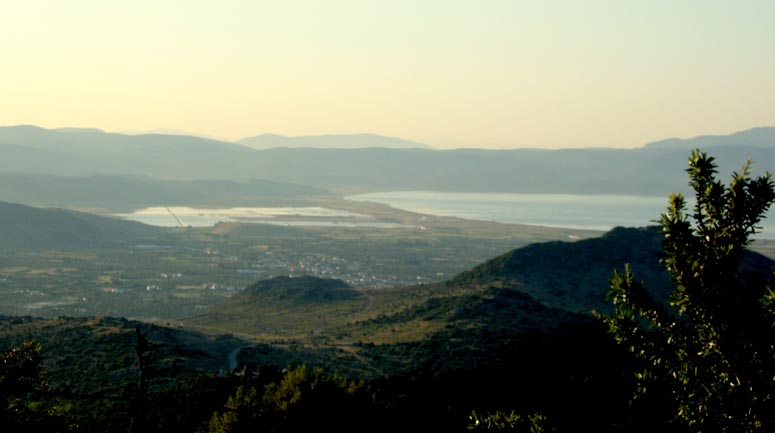
MOANS, GROANS & MEMORABLE MOMENTS.
Groan
I have to say that the treatment of us and others by First Choice was little short of disgraceful. Both flight times and carrier were changed several times in the weeks leading to our departure. I can accept if you want a meal you may need to pay for it, but to extract more cash out of you by saying that unless you cough up an extra £12:00 per person they won’t guarantee you can sit together is little short of scandalous. I heard one poor sod ask for a second cup of tea, to be told “only 1 per person”
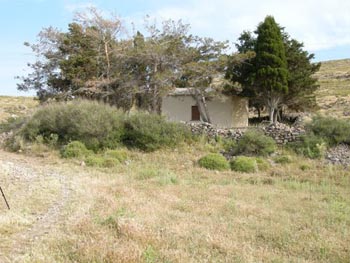 We were delayed at Manchester because they claimed they needed to change the “emergency instructions” prior to our boarding, this delayed our arrival at Gatwick, consequently we missed our slot and sat on the apron for nearly one and a half hours. We were also delayed on our return flight because of a 3 hour Greek air traffic control strike. This was obviously out of the hands of the carrier, but their terminal staff were surly and offered little info, insisting that the plane was arriving at a certain time knowing all along that it hadn’t even left Manchester.
We were delayed at Manchester because they claimed they needed to change the “emergency instructions” prior to our boarding, this delayed our arrival at Gatwick, consequently we missed our slot and sat on the apron for nearly one and a half hours. We were also delayed on our return flight because of a 3 hour Greek air traffic control strike. This was obviously out of the hands of the carrier, but their terminal staff were surly and offered little info, insisting that the plane was arriving at a certain time knowing all along that it hadn’t even left Manchester.
I’m afraid they are “First Choice” in name only.
Moan
Our hire car was booked through Economy Cars Rentals who cross-hired our vehicle through Avis. On arrival I was informed by Avis that Economy had cancelled not only our vehicle, but others also cross hired in the same way. Avis wasn’t exonerated in this as I was told by their rep that he needed to deal with one customer for approximately 10 minutes, then he would sort us a car to get us under way. He disappeared and after 40mins I went looking for him and found him dealing with several other customers. When I said he had said just 10 minutes his reply was “if you don’t like it find another hirer”. As we had paid some £160:00 deposit I was reluctant to take up his offer. We won’t be using either company again.
Groan
Once again I have to say that the “long-lens brigade” did little to endear themselves to us mere mortals, both blocking tracks and fords with their mobile hides (cars) in their quest to poke their long lens within millimetres of their subjects and also taking down fences and gates in fields holding stock, again to poke their lenses as close as possible. They will probably be the first to complain when access to these places is closed…..or will have moved on to pastures new! Why are they all called Nigel?
Their numbers were swelled by our continental cousins from Germany who were, in the main, birders, in large groups and tended to monopolise birding spots and hides. This is a phenomenon that has occurred since our last visit. We envisaged our early morning trips to the various hides would be greeted with towels draped over the seats (only kidding); they weren’t that bad and I actually saw one smile. Good luck to them
Moan
The lack of hot water at the apartment in the early morning & evenings when you want a shower & shave.
Memorable Moments
Sitting in the vehicle at Chrousos Ford watching a pair of Little Crakes feed out in the open (magic).
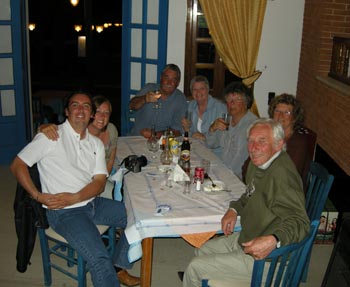 Seeing several dozen Bee-Eaters caught in the early morning light adorning the fence on the track between Sigri & Eresos.
Seeing several dozen Bee-Eaters caught in the early morning light adorning the fence on the track between Sigri & Eresos.
Soporific evening spent with friends at the Sea Horse Restaurant, just re-living that day’s birding and generally putting the world to rights. Left to right, Howard, Siwan (the Kids), Yours Truly & Jude, Frances, (sweaty) Joan & John, (Derby & Joan) “Great Times”. Cheers to all the other acquaintances who have become friends over the years.
My climbing onto Frances’s balcony to secure her shutters, which were being slammed against the wall by the strong winds. On my exit I over-balanced and toppled forward, falling headlong into a very large rose bush, lacerating my stomach, upper thighs and unmentionables.
Waking up abruptly, after loosing the back end of our Jimny on our dawn run to Ypsilou, after heavy early morning rain.
Spending a couple of days with a work colleague, (Charles and his family, Kath and Owen). It was their first visit, made in part on my recommendation. They “loved it”.
Being refused entry and being shooed out of Ypsilou Monastery by the Abbot and one of his underlings. All this was done in total silence with just hand gestures. I even tried to play my ace by saying I needed the toilet, to no avail. We never did find out what their objection was, because by 10:30 the place was rocking with birders and photographers and our passage was no longer denied. What happened to “love thy neighbour” – a most surreal moment. Systematic Bird List
Lesvos Map showing key sites
